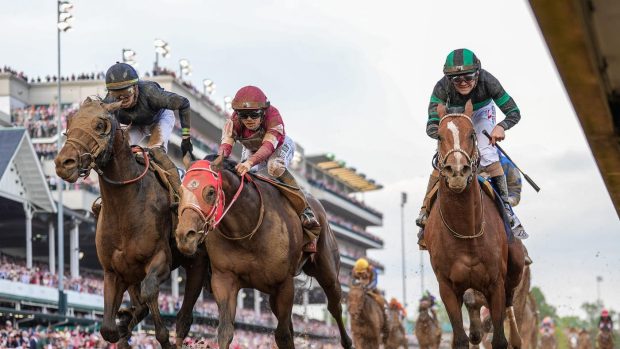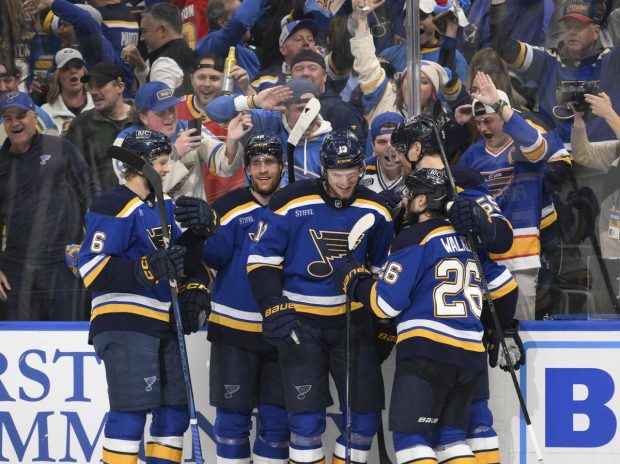

This year looked like it just might be different for the Los Angeles Kings. They were a better team than the Edmonton Oilers in the regular season, and it remained that way through the first two games and two periods of the postseason.
The Kings were trying to snap a three-year playoff losing streak to the Oilers, and that looked like the probable outcome after they took Games 1 and 2 on home ice. Then the wheels came off for Los Angeles. The team suffered four straight losses, two of which came after blowing third-period leads, and the result was the same it’s been every year since 2022.
This latest postseason drubbing at the hands of the Oilers might be the most painful. The situation set up perfectly for the Kings. They were playing elite defense against an offense that wasn’t very deep outside of a few big guns. The Los Angeles offense, which had been improving down the stretch, got to face an Edmonton blue line that was without shutdown defenseman Mattias Ekholm.
In goal, the Kings had a decided edge. Darcy Kuemper is a Vezina Trophy finalist, and Stuart Skinner had been extremely inconsistent from start to finish.
Despite all that, Los Angeles couldn’t get the royal blue and orange monkey off its back. Connor McDavid, Leon Draisaitl and company proved to be too much for the Kings to overcome yet again.
I won’t dive into the “definition of insanity” cliche, but suffice to say something has to change for Los Angeles moving forward. Whether its personnel, coaching philosophy or player usage, let’s take a look at what went wrong for the Kings and what needs to be tweaked.
Personnel
This matchup was all about the Kings’ depth versus the Oilers’ firepower. That depth looked like the safe bet through two games, but then that firepower in Edmonton really ignited. McDavid, Draisaitl and Evan Bouchard took over the series late in Game 3, and they didn’t look back.
The Kings’ issue isn’t simply that they lack McDavid. Join the club. Thirty other NHL teams have the same problem.
Los Angeles just doesn’t have enough dynamic offensive stars — players who can create their own scoring chances on a consistent basis. Adrian Kempe is a great shooter as he showed a few times in this series. Kevin Fiala is a skilled playmaker in the offensive zone. Anze Kopitar is one of the best two-way forwards ever, and Quinton Byfield is on that same trajectory. All that said, none of those players come close to McDavid or Draisaitl when it comes to generating instant offense.
In the final four games of the series, McDavid and Draisaitl combined for 14 points. Bouchard contributed a combined four goals in pivotal wins in Games 3 and 4.
If the Kings are going to capitalize on the championship window they’ve opened, then general manager Rob Blake must be aggressive in his pursuit of truly elite playmakers. Those players don’t grow on trees, but a couple of recent Stanley Cup champions (see: Florida Panthers, Vegas Golden Knights) have managed to connect on big personnel swings.
This offseason, the NHL salary cap will take another big jump, and that could facilitate some movement in free agency and on the trade market. The Kings need to be right in the middle of that as they try to load up for the very realistic possibility that they see the Oilers again in the 2026 Stanley Cup Playoffs.
Philosophy
Another glaring problem for the Kings in this series was how they handled third-period leads, particularly in Games 3 and 4. I can understand a team playing to its identity, and Los Angeles was very effective at shutting down opponents with late leads in the regular season, but that strategy is a little tougher to execute against an Oilers team that can score in the blink of an eye.
After nearly getting burnt by attempting to park the bus in Game 1, the Kings kind of rolled that plan out to varying degrees in Games 3 and 4 when they entered the third period with the lead. After a competitive first 40 minutes in which the Kings were on their heels and took advantage of a depleted Edmonton defense, they tried to rely on their two-way forwards and veteran defensemen.
That didn’t work at all. McDavid and the rest of the Oilers’ top weapons feasted, taking any bit of breathing room the Kings would give them as Los Angeles tried unsuccessfully to defend the ice in front of Kuemper.
The numbers from Natural Stat Trick paint a stark picture of the Kings’ third-period collapses in Games 3 and 4.
| 1st & 2nd Period | 3rd Period | |
|---|---|---|
|
Shots |
48-38, LAK |
29-14, EDM |
|
HDSC |
20-16, EDM |
9-5 EDM |
|
xG |
4.9-4.3, EDM |
3.9-0.9, EDM |
|
Goals |
7-4, LAK |
6-0, EDM |
That type of shutdown approach with late leads has been a feature of the Kings, dating back to when Todd McLellan was the coach from 2019 to 2024. When Jim Hiller was promoted to that role, he kept the same identity. That identity has won the Kings a lot of regular season games, but it clearly has its shortcomings when trying to close out games against one of the best teams in the West.
It’s understandable that a team like the Kings would want to avoid taking too many risks late against a team as lethal as the Oilers. However, Los Angeles probably could have kept its foot on the accelerator a bit more in an attempt to put Edmonton on its back foot in high-leverage situations.
Player usage
To his credit, Hiller did try to lean into the depth advantage his team had in the series. Nine different Kings averaged over 20 minutes of ice-time per game. Only six Oilers saw that kind of playing time. The trouble for Los Angeles was that many of those players, especially veteran defensemen, weren’t effective enough while they were in the game.
For instance, Drew Doughty and Mikey Anderson drew the tough assignment of dealing with McDavid’s line. As good as that duo was in the regular season, they struggled in that matchup. The Oilers controlled more than 75% of the expected goals with McDavid on the ice against Doughty and Anderson at five-on-five, per Natural Stat Trick.
Doughty and Anderson weren’t alone, though. The other veteran defensive pairing of Joel Edmundson and Vladislav Gavrikov were below even at five-on-five as well.
Those results prompt questions about why the very skilled and very mobile (albeit young) duo of Jordan Spence and Brandt Clarke wasn’t deployed more often. Those two averaged 7:31 and 12:47 minutes per game, respectively. Coaches are always reluctant to use young defensemen in critical moments, especially in the playoffs, but that pairing could have provided an offensive boost from the back end. Those two combined for 61 points in the regular season.
At the very least, Spence and Clarke could have eaten some more minutes in the earlier portions of games so that players like Doughty and Anderson would have a little more gas left in the tank while trying to close out wins. The younger defensemen may very well have struggled as much as everyone else, but they probably deserved a longer leash than they got.
This news was originally published on this post .










Be the first to leave a comment